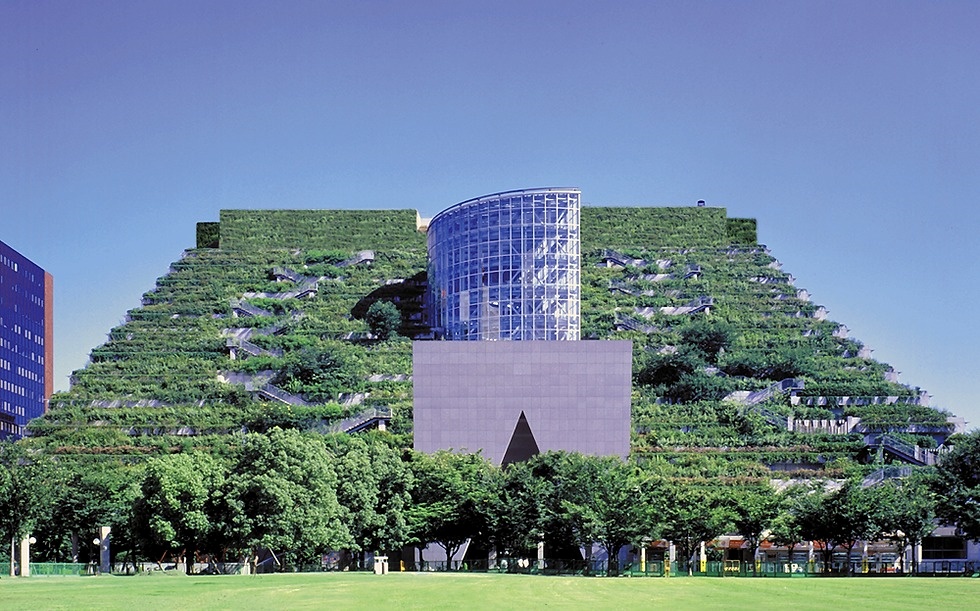Emilio Ambasz: the President’s Award from the Consortium for Sustainable Urbanization (NY)
The New York-based Consortium for Sustainable Urbanization (CSU) has given the President’s Award to Emilio Ambasz. The accolade was bestowed on one of the greatest international masters of design and architecture during a gala evening at the Century Association in New York City on 23 March, 2023. A unique type of design, creative flair, moral commitment, and  environmental awareness is at the heart of the reasons given for the award.
environmental awareness is at the heart of the reasons given for the award.
The Consortium for Sustainable Urbanization is an institution committed to promoting global projects and ventures, often in collaboration with the United Nations, regarding the issues of sustainability. Together with its partners including AIANY (The American Institute of Architects New York), the UN agency UN-Habitat, and Columbia University, gave the prestigious President’s Award to Emilio Ambasz for his commitment to the fields of sustainable, responsible and resilient urbanisation, planning, and design.
Emilio Ambasz, recognised as the father, poet and prophet of green architecture, is also celebrated as a grand inventor of design objects currently found in homes, offices, and towns and cities on every continent on the planet (Ambasz has more than 220 industrial and mechanical patents).
Lance Jay Brown, president and founding board member of the Consortium for Sustainable Urbanization, recalled the pioneering figure of Emilio Ambasz in the field of the relationship between architecture and nature, his design philosophy inspired by “Green over grey” that gave form and substance to projects and constructions that have become prime examples for the green architecture that is so fashionable now.
“Emilio Ambasz continues to be of great influence. For over fifty years he has exemplified the capacity of design to work across disciplines and industries and to positively influence the environment we inhabit. This has been done intellectually, philosophically, and kinetically by his many and varied activities.
He was so early to integrating sustainable architecture, urban design, and landscape architecture that most were not yet ready to appreciate the profundity of his work. The Consortium for Sustainable Urbanization is both privileged and pleased to honor him with this recognition.” ~ The CSU Citation

Emilio Ambasz, ACROS Centre in Fukuoka, Japan, 1995. An awe-inspiring 100,000 square metre pyramid building in the city centre that has given back to the community the land on which it stands. ACROS Fukuoka Prefectural International Hall; Photo Courtesy Emilio Ambasz & Associates; Photographer: Hiromi Watanabe
Emilio Ambasz said: “Seeing many others using plants in their projects makes me realise that my mission is beginning to bear fruit. Hearing some of them claiming authorship for these ideas makes me feel like a mythological character, but I know that it’s just a case of preordained Freudian fate.”
Lance Jay Brown highlighted some of the award-winning works that, decades later, remain at the heart of the debate on poetics and the discipline of design and that have influenced some of the most illustrious names in contemporary architecture, from Renzo Piano to Jean Nouvel and Tadao Ando:
- The ACROS centre in Fukuoka (1995), an awe-inspiring 100,000 square metre pyramid building in the city centre that has given back to the community the land on which it stands;
- The Casa de Retiro Espiritual in Seville (1972), an incredible, dreamlike reference to the primordial notion of home, one of the most acclaimed optical illusions in the world;
- the Lucile Halsell Conservatory in Texas (1982), an extraordinary work that winds its way through underground passageways and tectonic explosions of polymorphic glass elements.

Emilio Ambasz, Lucile Halsell Conservatory in Texas (1982), an extraordinary work that winds its way through underground passageways and tectonic explosions of polymorphic glass elements.
“Ambasz’s research has inspired a new development in the recent success of many among his fellow architects,” in the words of Tadao Ando.
The ceremony also recalled Ambasz‘s role as curator of Architecture and Design at the Museum of Modern Art of New York (MoMA), where he organised the hugely successful exhibition Italy: the new domestic landscape (1972), bringing Italian design objects to the attention of the whole world. Like the Metropolitan Museum (NY), MoMA’s permanent collection includes the Vertebra chair (1975), the world’s first automatic ergonomic chair, developed with G. Piretti, which triggered a new industry for the whole sector (Compasso d’Oro in 1981).
Finally, Lance Brown recalled the donation of $10 million from the foundation that bears Ambasz’s name, Legacy Emilio Ambasz Foundation (LEAF), to MoMA to establish the Emilio Ambasz Institute for the Joint Study of the Built and the Natural Environment, dedicated to exploring the relationship between Architecture and Nature, fueling the global debate about the urgent need for an ecological recalibration.
The President’s Award from the CSU is one more in an endless list of awards, accolades, honours, and monographs for a person who, out of the spotlight, declares himself to be “honoured and proud” of it all. Ambasz continues his mission as a visionary inventor and bearer of a message that reconciles artifice and nature: “Every building is an intrusion into the plant kingdom and is a challenge to nature: we must devise architecture that stands as the embodiment of a reconciliatory pact between nature and construction, designing buildings so intrinsically connected to their surroundings that they are unable to disentangle themselves from each other.”
Consortium for Sustainable Urbanization (CSU) is a New York-based non-profit organisation, accredited by the United Nations Economic and Social Council (ECOSOC). Its mission is to support responsible and sustainable planning and design by promoting debate, action, and networking between the UN, the planning and building sectors, and citizens. Actively engaged in adopting the 2030 Agenda for Sustainable Development and the New Urban Agenda at the Habitat III Conference, the CSU is instrumental in providing recommendations and key ideas to achieve Sustainable Development Goal (SDG) 11 to “Make cities and human settlements inclusive, safe, resilient and sustainable” and to implement the New Urban Agenda, as well as the Paris Agreement.
 Greenroofs.comConnecting the Planet + Living Architecture
Greenroofs.comConnecting the Planet + Living Architecture





